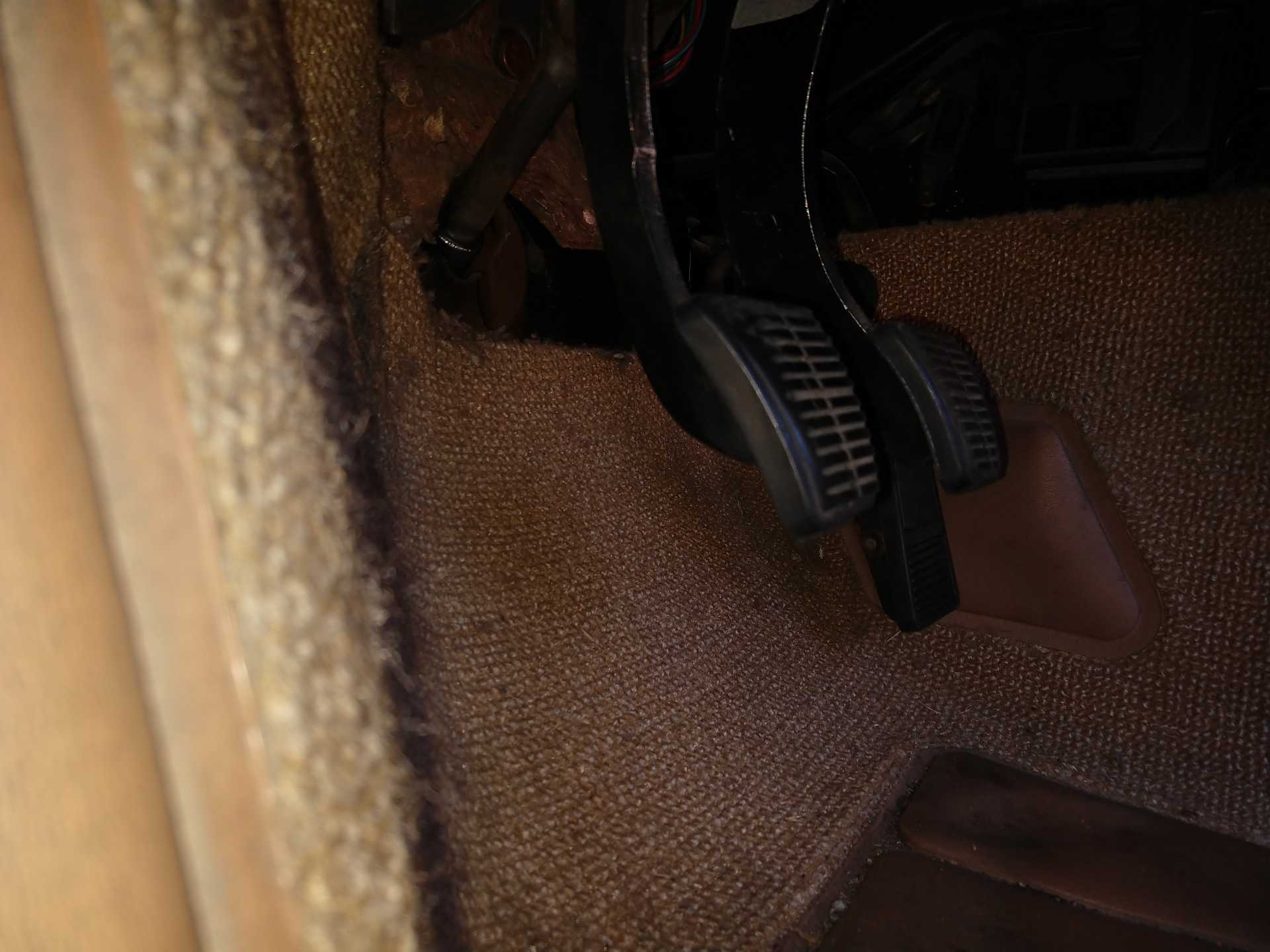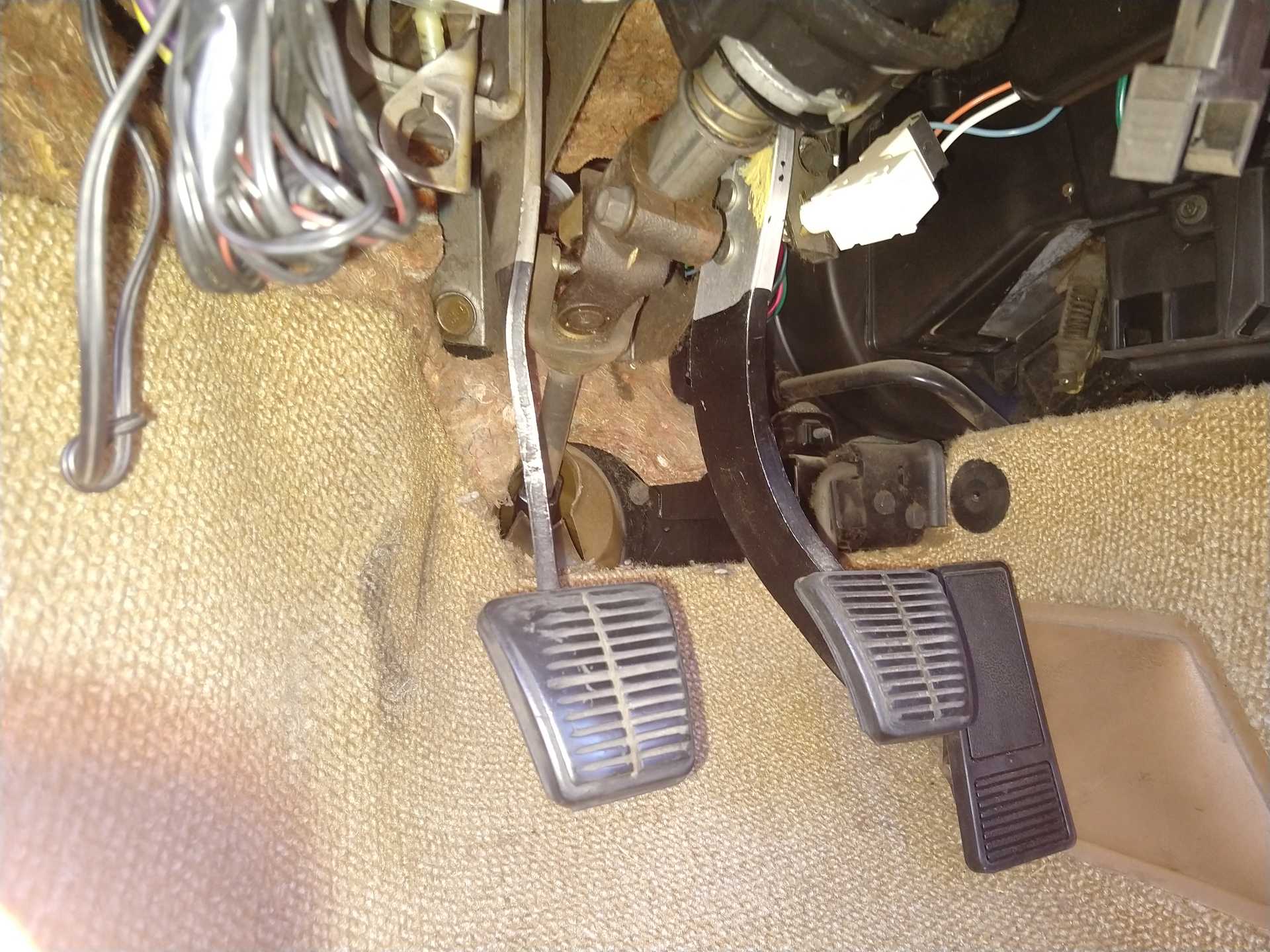
 
     |
| 1988 4cyl MT2/Isuzu 5 speed: New Clutch Starting to Slip After ~1500 miles (Page 1/3) |

|
gjgpff
|
SEP 25, 04:41 PM
|
|
Please forgive the extensive background, I can't be sure what's relative and what isn't:
BACKGROUND AND SYMPTOMS:
1) I got the car in June from Idaho: 53k miles, mechanic checked it out and replaced front rotors/brake pads in Boise (the only thing he through was problematic)
2) Drove it down to Southern California. Clutch failed going up the Grapevine (steep incline, about 880 miles into the trip back home)
3) Brough the car to our family mechanic, he's really good but he had great difficulty getting enough travel to engage/disengage. Gave it new clutch, machined flywheel, new master/slave cylinders. Finally got it to work.
4) Been driving it for ~1500 miles, no complaints, successfully replaced leaky transmission seals (no, they were not leaking when I got it back from mechanic), and did a bunch of other unrelated work on it (new headliner, replaced vacuum lines, valve cover gasket, etc)
5) This week I noticed that the clutch is slipping sometimes: I see the tach go up too fast and hear the engine rev but don't get the acceleration. Mostly I've seen it in 4th gear and maybe 5th during freeway driving.
6) I've also noticed, and this may be unrelated, that the "SHIFT" light sometimes comes on when I'm in 5th gear. I don't remember seeing this before.
WHAT DOES THE FACT THAT THE NEW CLUTCH IS SLIPPING AFTER ~1500 MILES SAY?
1) I have many hundreds of thousands of miles driving manual transmission cars: 1998 Subaru Outback had it's clutch replaced at ~70k, and was traded in at ~200k
2) Even if I rode the clutch like Bronco Billy, I don't think I'd wear it out in 1500 miles if something else wasn't going wrong.
3) Even the original clutch going out at 53k seems a bit suspicious, though.
WHAT MORE CAN I DO TO FURTHER DIAGNOSE THE PROBLEM?
1) Are there pictures I could take that might help with diagnosis?
2) I've read somewhere that the clutch for Isuzu/Iron Duke is not "self adjusting". Could this be part of my problem?
3) I can't even find the instructions for clutch replacement in the MT2/Isuzu transaxle section of the Service manual.
I intend to locate the invoice so I can post the parts that the mechanic used to do the clutch.
Thanks in advance guys.
------------------
Geoff Gibbons
1988 4cyl Manual[This message has been edited by gjgpff (edited 09-25-2020).]
|
|

|
Patrick
|
SEP 26, 04:32 AM
|
|
| quote | Originally posted by gjgpff:
Brought the car to our family mechanic, he's really good but he had great difficulty getting enough travel to engage/disengage. Gave it new clutch, machined flywheel, new master/slave cylinders. Finally got it to work.
|
|
This makes me a little suspicious as to whether your mechanic ever really got the clutch fully disengaging/engaging properly.
Did the clutch feel 100% normal when you got the car back from the mechanic with the new clutch? No slippage when engaged, and it disengaged fully?
Just curious... does your clutch pedal sit above your brake pedal while at rest?[This message has been edited by Patrick (edited 09-26-2020).]
|
|

|
gjgpff
|
SEP 26, 02:35 PM
|
|
| quote | Originally posted by Patrick:
This makes me a little suspicious as to whether your mechanic ever really got the clutch fully disengaging/engaging properly.
Did the clutch feel 100% normal when you got the car back from the mechanic with the new clutch? No slippage when engaged, and it disengaged fully?
Just curious... does your clutch pedal sit above your brake pedal while at rest?
|
|
The clutch felt the same as before and I didn't notice any slippage when engaged, and it does disengage fully (RPMs dropping immediately to idle when clutch is pushed all the way in and the accelerator is not pressed). Not sure if that's a great test but that's my reason for thinking it disengages fully.
Here's a couple of pictures of the clutch pedal and you're right: it should be about 1" above the brake pedal but it's pretty much level with it:


It's an 88 and the clutch pedal is all steel (checked with magnet), so it isn't one of the bendy aluminum ones. I'm willing to spring for a Fiero Store clutch pedal or Rodney Dickman's fix it kit (and his master/slave cylinders for that matter), but I'm wondering how a low/bent/improperly installed clutch pedal can, on one hand, engage/disengage the clutch enough to make driving possible, but on the other hand, cause the clutch to slip.
It would be great if I didn't have to replace the clutch after only 1500 miles!
Thanks for the help
|
|

|
Patrick
|
SEP 26, 03:44 PM
|
|
| quote | Originally posted by gjgpff:
It's an 88 and the clutch pedal is all steel (checked with magnet), so it isn't one of the bendy aluminum ones.
|
|
Keep in mind that the U-shaped bracket (that the banjo is attached to) is what often bends... and that part has always been steel. When that bracket is bent, clutch throw is reduced as the pedal hits the floor before full travel can be accomplished. The banjo itself can also be bent.

If you remove the clip and detach the banjo from the pedal, are you then able to pull the pedal up towards the pedal stop? If so, that distance is the amount of pedal travel/clutch throw that's been lost.
Before you detach the banjo, take note if the loop of the banjo is in the up position.
| quote | Originally posted by gjgpff:
...but I'm wondering how a low/bent/improperly installed clutch pedal can, on one hand, engage/disengage the clutch enough to make driving possible, but on the other hand, cause the clutch to slip.
|
|
I obviously don't know anything about your mechanic. I don't know about his ability and/or his integrity. It's a red flag when there's something evident which compromises full clutch pedal travel. My concern is that possibly there was some "hack" done to get the clutch to fully disengage (despite lack of pedal travel) and that this resulted in the clutch never fully engaging. This could have led to continual slippage (perhaps not entirely noticeable) which then would've led to premature wear/failure.
Of course, this is all conjecture. I'm just making wild guesses.
Maybe the engine's rear seal has failed and the clutch disc is now all coated in oil.  [This message has been edited by Patrick (edited 09-29-2020).]
|
|

|
reinhart
|
SEP 26, 08:22 PM
|
|
The bent pedal or air in the line etc would not cause it to slip, it would cause it to not release. So if that were your problem then I would look there. It looks like the pedal still needs to be fixed but that isn't what's causing the slipping.
Did your mechanic look at the old clutch disc to see if it was worn evenly, or what caused the failure?
Did he give you paperwork for machining the pressure plate or was it a new one? If he just reused the old one, it could cause faster failure. On mine, one of the springs was bad which I noticed when I tore it apart. A bad spring could cause slippage.
The strange thing is the high gear slippage. I would think it would slip more in low gear when the torque is higher. Even if the springs were bad or there were oil on the disc, it seems like it would be more prone to low gear, high RPM slippage. Is there no slippage when accellerating from low gears or if you keep it in 3rd and cruise at highway speeds?
If it's really perfect in 1-3 then I would think it has to be transmission related...something in the case?
I had an 87 Isuzu where the release fork broke which made the pedal feel funny and it didn't spring up. With your experience, it doesn't sound like that could be the issue.
|
|

|
Patrick
|
SEP 26, 10:22 PM
|
|
| quote | Originally posted by reinhart:
The bent pedal... would not cause it to slip, it would cause it to not release. It looks like the pedal still needs to be fixed but that isn't what's causing the slipping.
|
|
If you're referring to something I posted, I never stated that the bent pedal itself was responsible for the clutch slipping.
| quote | Originally posted by Patrick:
It's a red flag when there's something evident which compromises full clutch pedal travel. My concern is that possibly there was some "hack" done to get the clutch to fully disengage (despite lack of pedal travel) and that this resulted in the clutch never fully engaging. This could have led to continual slippage (perhaps not entirely noticeable) which then would've led to premature wear/failure.
|
|
|
|

|
Blacktree
|
SEP 26, 11:37 PM
|
|
|
The OP mentioned replacing seals in the transmission. I'm guessing the axle seals? Do you know if the input shaft seal was replaced? If it leaks, it will contaminate the clutch with oil. When you remove the clutch, check for signs of oil seeping out of that seal.
|
|

|
reinhart
|
SEP 27, 03:43 AM
|
|
| quote | Originally posted by Blacktree:
The OP mentioned replacing seals in the transmission. I'm guessing the axle seals? Do you know if the input shaft seal was replaced? If it leaks, it will contaminate the clutch with oil. When you remove the clutch, check for signs of oil seeping out of that seal. |
|
Why is it only slipping in 4 & 5 though if oil contaminated?
|
|

|
fieroguru
|
SEP 27, 08:40 AM
|
|
It is normal for clutches to start slipping in the high gears. In lower gears it is easier to move the car than slip thr clutch, in the higher gears it takes much more torque to accellerate.
I suspect the bushings on the cross shaft for the clutch release bearing are dry and starting to bind. The 4cly pressure plate has a very light clamp load, so anything that keeps it from fully clamping the clutch disk will cause an issue.
|
|

|
Dennis LaGrua
|
SEP 27, 10:39 AM
|
|
|
I seen one instance where a bad distributor O ring leak caused some oil to find its way on the clutch and this caused a slip. ------------------
" THE BLACK PARALYZER" -87GT 3800SC Series III engine, custom ZZP /Frozen Boost Intercooler setup, 3.4" Pulley, Northstar TB, LS1 MAF, 3" Spintech/Hedman Exhaust, P-log Manifold, Autolite 104's, MSD wires, Custom CAI, 4T65eHD w. custom axles, Champion Radiator, S10 Brake Booster, HP Tuners VCM Suite.
"THE COLUSSUS"
87GT - ALL OUT 3.4L Turbocharged engine, Garrett Hybrid Turbo, MSD ign., modified TH125H
" ON THE LOOSE WITHOUT THE JUICE "
|
|
    
  |
|
